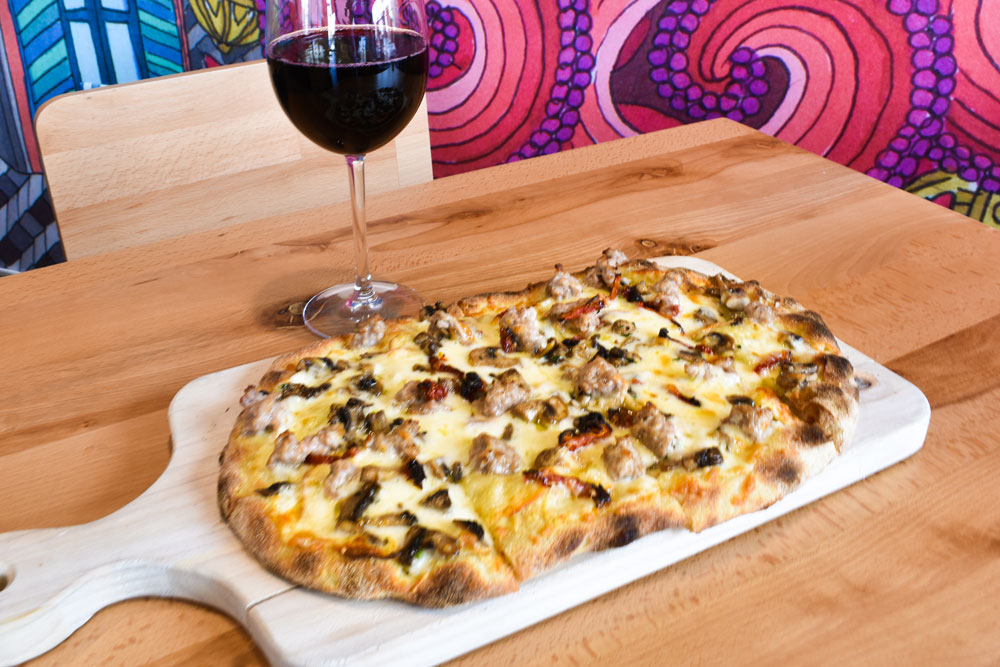- The pinsa-making process at Via Roma depends on a unique flour blend and hydration, says owner Biagio Cepollaro.
- Pinsa has a rising or proofing process of 72 hours—no less and no more—and is then cooked immediately.
Related: Pinsa is revolutionary in flavor, texture and shape
By Biagio Cepollaro
The pinsa making process at Via Roma is both unique and common in the pinsa world. Common because there are no new elements added to it—it’s simply yeast, water, flour, salt, mixing and rising. That’s it. However, the process is unique, because the flour we use is a special mix of wheat, soy and rice flour. Mix in a little bit of fiber, and you have a special flour that’s rarely used in Italy.
What sets pinsa apart from the classic Italian pizza we see in the United States is not only the flour, but the amount of water. For one kilogram of flour, we add 900 grams of water. This means our dough has a hydration of about 90%, while other pizzas, such as the Neapolitan, do not go higher than a hydration of about 75%. Once the dough is mixed, it’s time to proof.
“Timing is absolutely crucial when making pinsa. Pinsa has a rising or proofing process of 72 hours—no less and no more—and is then cooked immediately.”
— Biagio Cepollaro, via roma pizzeria
Timing is absolutely crucial when making pinsa. Pinsa has a rising or proofing process of 72 hours—no less and no more—and is then cooked immediately. If you wait longer than 72 hours, the dough not only decreases in volume, but the yeast stops working its magic; the dough will lose the necessary organic properties that make pinsa so delicious.

After proofing, each single dough gets rolled in rice flour and is cooked 25% through for about one minute, making the bottom of the dough really crispy. Once the dough is 25% cooked, we take it out of the oven to cool and add the sauce and any toppings that the customer’s heart desires. Last, after all the toppings are added, we cook the remaining 75% for another three minutes, until we have the final product ready to be brought to the table.
To achieve the desired outcome, the oven needs to be electric. Controlling the temperature on the dome and deck is key to a delicious pinsa. The deck should be set at a lower temperature in order to cook the bottom of the pinsa more slowly, to get the crispier result. The dome should be hotter, because cooking the top of the pinsa faster yields a lighter result. When it comes to making pinsa, cooking with a gas oven is a huge misstep.
Related: How to make a smarter Roman-style pizza

Each individual step, and the chemical reactions that present themselves during the pinsa making process, all boil down to science. The extra hydration, combined with the extended proofing process, achieves that light, airy texture we love—it’s filling but easy to digest.
It may not be measurable, but the essential factor in the equation is the love we put into every single pinsa we make at Via Roma. That’s the most important part of the science!
Biagio Cepollaro is the owner of Via Roma Pizzeria in Camp Springs, Maryland. Visit Via Roma’s website at viaromamd.com.















